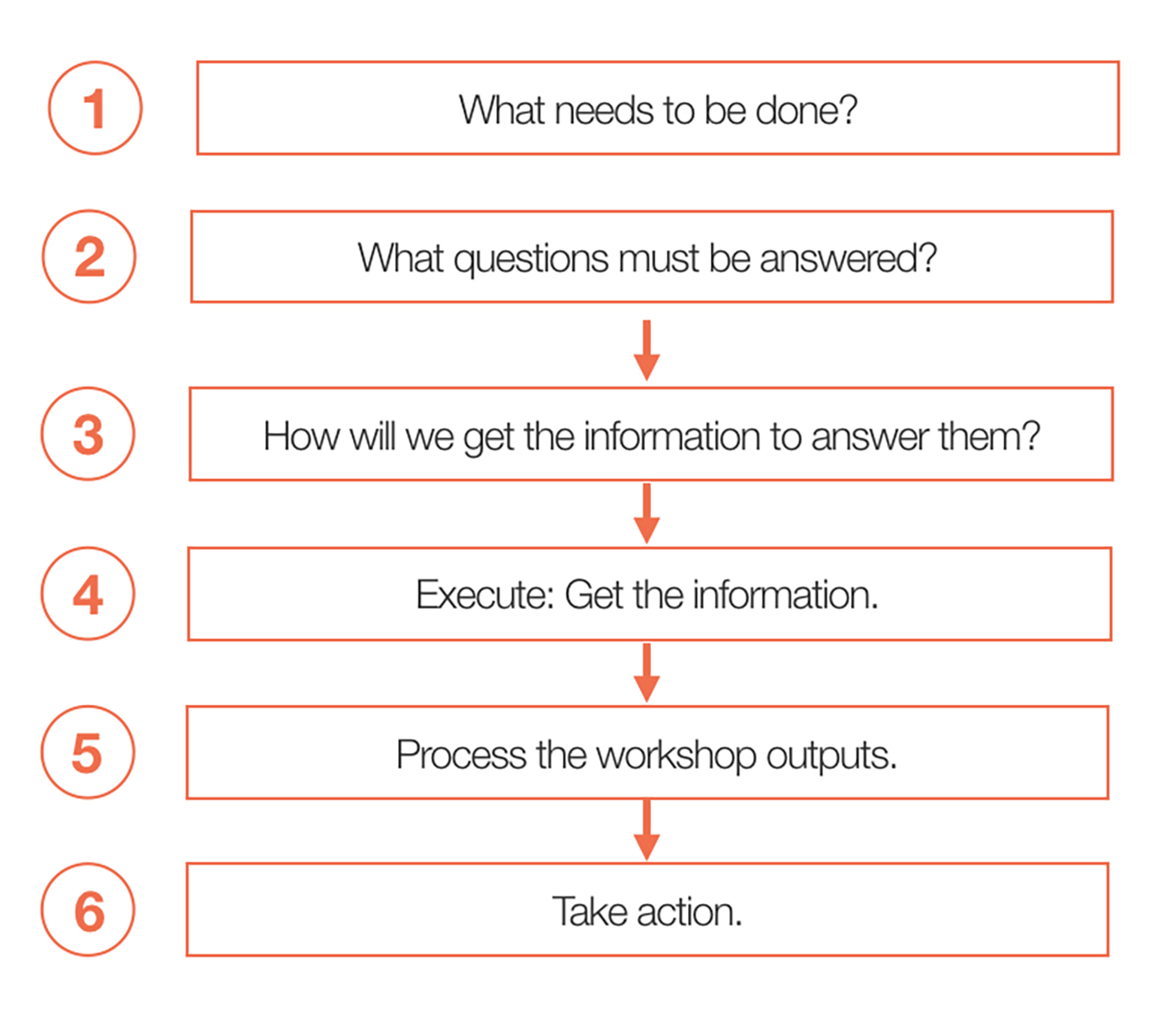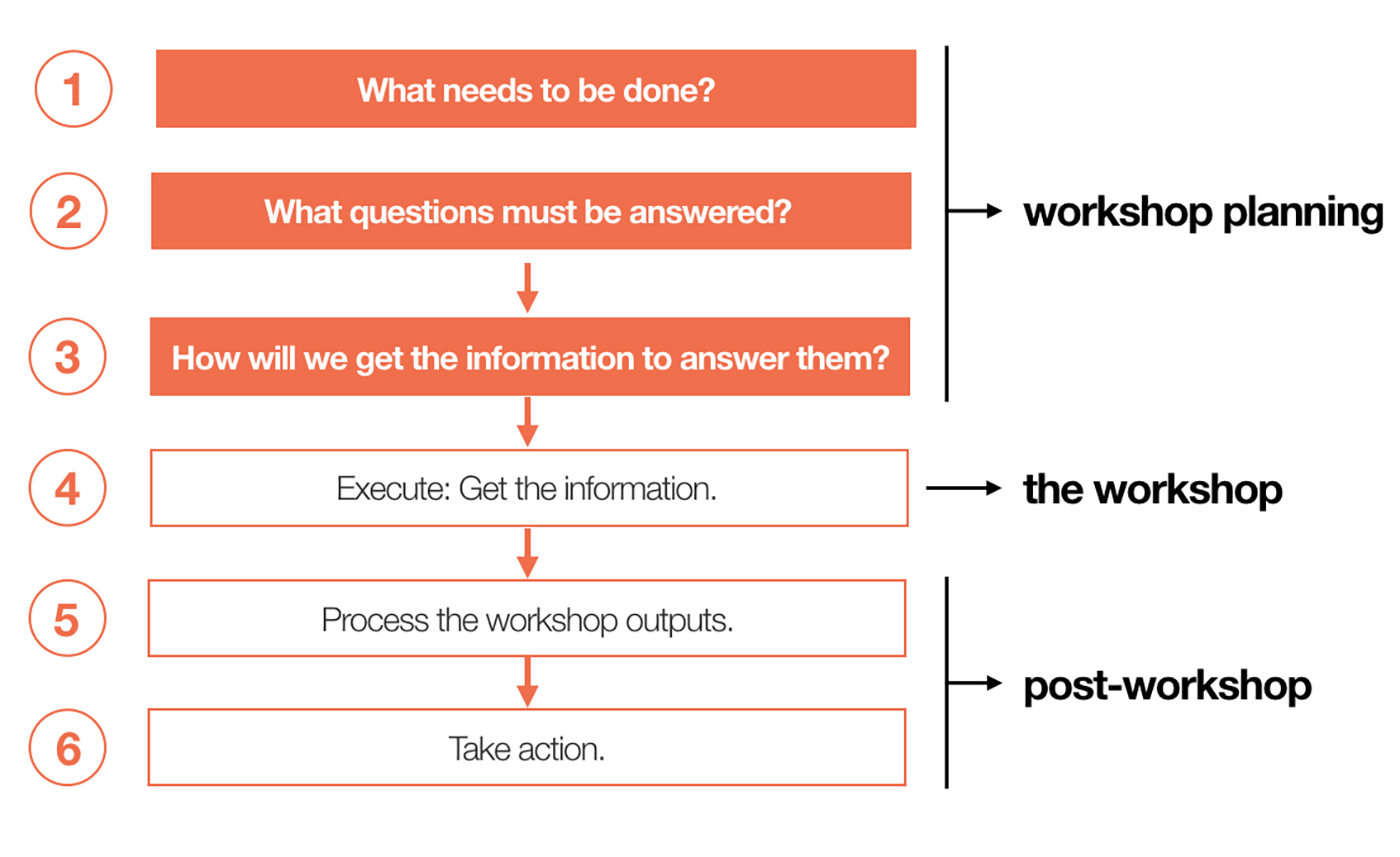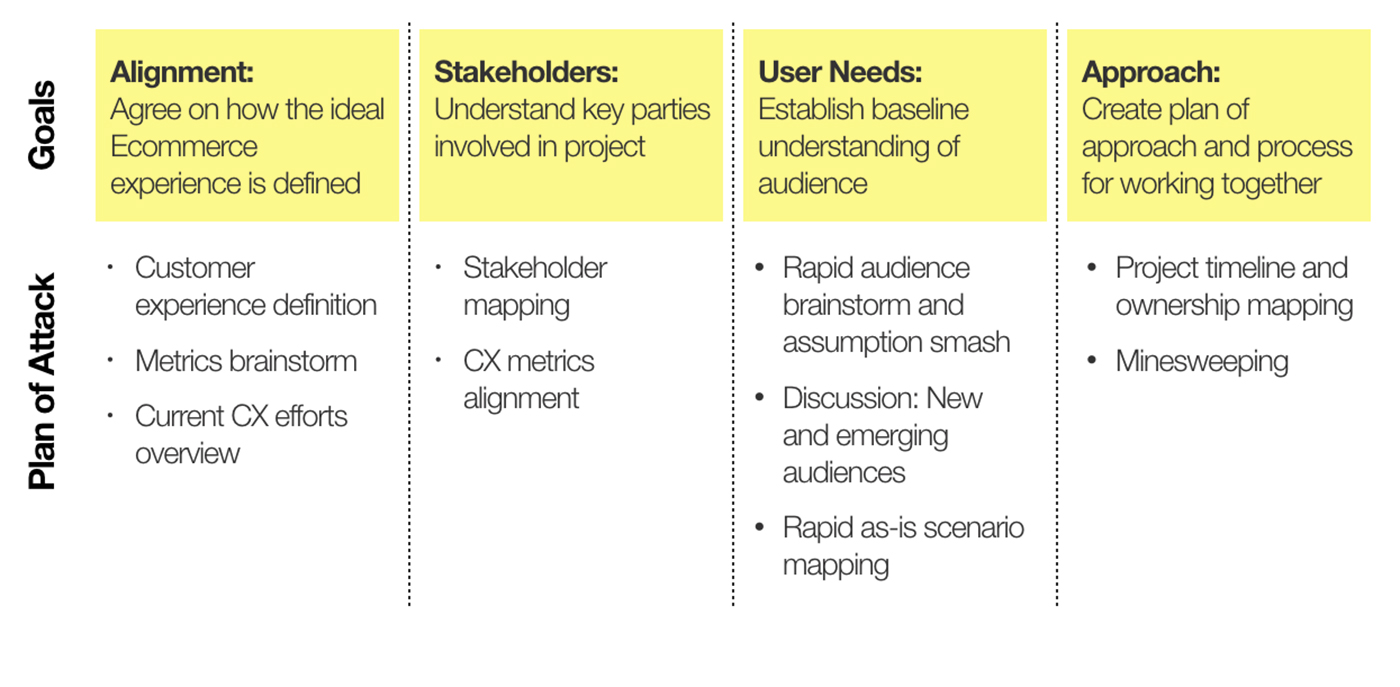User experience is not a siloed practice. To collect knowledge and generate new ideas, it’s best to bring people together. This is the only way to create an integrated and unified user experience — let alone a consistent omnichannel design. But even when people come together with the best intentions, ideas and outputs don’t just simply happen. Oftentimes, the job of planning and even facilitating workshops falls upon the UX lead, who must design the flow of the workshop and plan collaborative exercises that will lead attendees toward a common goal.
“Plans Are Useless, but Planning Is Indispensable”
When preparing a UX workshop, it can be daunting to understand where to start. Sometimes it’s tempting to jump straight to the design of the workshop and the selection of workshop activities, rather than beginning with a clear goal and a focused strategy. Planning, however, is an indispensable part of creating and facilitating productive UX workshops.
Dwight D. Eisenhower understood the value of prep work. He once said, “In preparing for battle, I have always found that plans are useless, but planning is indispensable.” Likewise, workshop facilitators may often find that, even when carefully planned workshop agendas divert in real-time because of new information, the time spent planning is still crucial for effective facilitation.
This article outlines a systematic, modular approach to building workshop agendas that ensures that time spent in the workshop will be valuable and that actionable results will be produced.
Three Building Blocks of Effective Workshop Agendas
There are three building blocks of effective workshop agendas. By understanding and using these building blocks as a foundation for your agenda, you can ensure that the activities and discussions of a workshop are directly aligned to the overall goal, and designed to help solicit and document critical information needed to move forward.
The three building blocks are:
- Goal: The desired outcome or end result of a workshop
- Questions: The information that the organizer needs to gather in order to reach the stated goal
- Processes: The activities the attendees will do in order to gather the required information
Additionally, there is a precise approach, outlined below, that helps articulate and integrate these three building blocks into a workshop agenda.
Six Steps for Workshop Planning and Execution
The process of planning and executing a UX workshop has six steps, beginning with understanding the purpose—or high-level goal of the workshop—and ending with a course of action taken based on the results produced by the workshop.
Step 1: Articulate the goal(s).
When crafting a goal statement, consider what the tangible output is that should be produced by the workshop, and write a short, clear description of the ideal end state. This statement will guide your agenda creation, ensuring that every segment is guiding towards that end state. Usually, end states fall into one or more common categories, such as:
- Agreement: Consensus on direction
- Understanding: Shared deeper knowledge of a subject
- Generation: Creation of new ideas or thought patterns
- Strengthening: Building empathy between teams or strengthening relationships between parties
Step 2: Document what information you need in the form of questions.
Typically, there is a gap between your current state and the goal state you have just articulated. You need crucial missing information in order to move yourself and the team toward that goal. What are those missing pieces of information? Ask yourself, “What questions must be answered in order for me to move toward my end-state goal?” and document those questions. Questions may be quite specific or broad. Some examples:
- Who is our audience?
- What defines the ideal user experience?
- What is the current state?
- What kind of metrics will be used to measure success?
- What user research do we have at our disposal, and what needs to be conducted?
- What potential roadblocks exist?
Once documented, most likely there will be themes and patterns within these questions that can be grouped into segments; these segments will start to create a structure for the workshop.
Step 3: Align processes to groups of questions.
The third step, and the last step in planning, before actually conducting the workshop, is composed of selecting workshop activities or discussions that align to each theme that emerged within the questions. At this point reflect on what types of processes — group activities or discussions — will help the group move toward answering the specific questions. Some examples:
- If you need to help a group move toward consensus, you might choose a forced ranking or prioritization exercise, like dot voting.
- If you need to generate new ideas quickly, you might choose a brainwriting activity, a post-it notes exercise, or some other form of brainstorming.
- If you simply need to understand what research is available across the organization, you might have different groups do short readouts of pertinent findings.
Step 4: Conduct the workshop.
The previous three steps of planning will adequately prepare you to guide the discussion, and understand if unplanned discussions that pop up are off-topic or meaningful tangents. Furthermore, once the outputs of th first three steps are translated into a formalized, shareable agenda, attendees will have a better understanding of the day’s goals when they can see where they are within the whole span of the workshop.
Step 5: Process the information.
When the workshop is over, analyze the information collected during the group activities and discussions. Analyze these outputs and share artifacts with attendees and other key stakeholders.
Step 6: Act.
Finally, use the results produced and the information gathered in your workshop in order to move the needle on your overall goal.


The Output: Sample Workshop Agenda
With goals, questions and processes clearly aligned, you have a tool that will guide you in preworkshop stakeholder discussions, and in creating a fleshed-out, timed agenda. A sample outline built on this process might look something like the following outline.

After you’ve created a focused agenda, keep going. You will need to develop timelines for each workshop segment, gather material needed to capture discussions and facilitate the activities, and consider additional logistical components, such as environment.
Conclusion
This practical method for building an agenda outline could easily apply to many types of workshops, not just UX workshops. Begin with overall workshop goals, articulate questions that will help gather the information to reach those goals, and finally, align appropriate activities and discussions. Following this systematic approach will ensure your workshops are a valuable use of time for both yourself and your attendees.





Share this article: